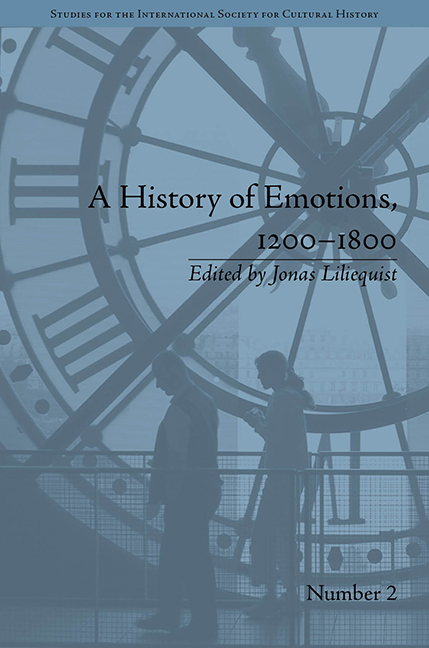Book contents
- Frontmatter
- Contents
- List of Contributors
- List of Figures
- Introduction
- I Theoretical Issues
- II Emotional Repertoires
- III Music and Art
- IV Gender, Sexuality and the Body
- V Uses of Emotions
- 11 The Little Girl who could not Stop Crying: The Use of Emotions as Signifiers of True Conversion in Eighteenth-Century Greenland
- 12 The Political Rhetoric of Tears in Early Modern Sweden
- Notes
- Index
11 - The Little Girl who could not Stop Crying: The Use of Emotions as Signifiers of True Conversion in Eighteenth-Century Greenland
from V - Uses of Emotions
- Frontmatter
- Contents
- List of Contributors
- List of Figures
- Introduction
- I Theoretical Issues
- II Emotional Repertoires
- III Music and Art
- IV Gender, Sexuality and the Body
- V Uses of Emotions
- 11 The Little Girl who could not Stop Crying: The Use of Emotions as Signifiers of True Conversion in Eighteenth-Century Greenland
- 12 The Political Rhetoric of Tears in Early Modern Sweden
- Notes
- Index
Summary
On 25 February 1740, a little boy paid a visit to missionary Paul Egede at the colony of Illulisat, Greenland. The boy needed Paul's help, and asked him to come see ‘a six-year-old girl who could not hear others speak of God without crying, so that they [her parents] only with great difficulty could settle her down again’.
Paul Egede was still a child himself when he accompanied his father Hans Egede to Greenland in 1721. Upon arrival, a colony was built in Nuuk, the first European settlement in Greenland since the late Middle Ages. Growing up in Greenland, Paul was later sent to Copenhagen, Denmark, for religious education, where he remained for six years before returning to Greenland as a missionary in 1734.
When the little boy came to see Paul with his urgent request, it was his last year in Greenland. Paul assured the boy he would come see the girl. In the meantime, he instructed that the little boy, the girl's sister Pernille, and another boy, Angusinak, were to make sure she continued to receive her lessons in Christianity. The girl's name remains unknown to us today even though Paul mentions her more than once in his diary – though each time only as the crying girl. This unnamed girl and the reason she cried is the subject of the present essay.
- Type
- Chapter
- Information
- A History of Emotions, 1200–1800 , pp. 167 - 180Publisher: Pickering & ChattoFirst published in: 2014



